How to Get a (Stronger) Grip
In the niche sport of competitive gripping (yes, you read that right), few feats are as impressive as the double-plate pinch hold with two old-school York Barbell 45-pound plates.
Plate pinching sounds simple: Set a pair of 2-inch-thick plates on their edges (smooth sides out), pinch them between your thumb and fingers, lift them to waist height, and hold. But in practice? The plates’ surfaces challenge even the fittest guys.
It’s a challenge you should try (but start with modern 5s): A large study suggests a link between weaker grip and higher risk of cardiovascular disease and early death. Plus, a weak grip is an invitation for injury.
A strong grasp can also help you lift more and rack up gym PRs. “Often it’s your hands that limit you when you lift,” says Jedd Johnson, a five-time North American Grip Sport champ.
Want to hone a viselike grip? Here are four ways to do it.
1. Crush It
Whenever you pick up a weight, squeeze the bar as tightly as you can. Actually, “crush the bar to a pulp,” says Pavel Tsatsouline, CEO of StrongFirst. Amp it up by squeezing your nonworking hand on single-arm moves like dumbbell rows.
2. Get Fat
Find extra-thick barbells, dumbbells, or handles for all your deadlifts and pulling exercises. Don’t have a fat bar? Find a towel and wrap it around a standard bar to make it more difficult to grasp. The larger bars—which are roughly twice the thickness of a standard bar—force you to squeeze harder to get a secure grip, so relatively light weights feel heavier, Johnson says.
3. Hang Out
For manlier mitts, strength coach Dan John recommends adding this simple challenge into your workout once a week: Do a pullup and then hang on the bar for 30 seconds. Without letting goof the bar, repeat until your grip fails or you can’t complete a pull-up. Ten reps translates into five-plus minutes on the bar—and proof that you have a badass grip.
4. Mix It Up
Your brain’s motor cortex puts to work more than 30 muscles just to control your hand. To strengthen all that sinew, think outside the barbell. “Towels hanging from the bar, thick ropes, and PVC pipes all place a different demand on your grip,”says MH fitness advisor DavidJack. Each week, do at least three sets of towel pullups or chinups, PVC drags or carries, or pulling exercise variations with ropes.
The Muscles You Need for a Super-Strong Grip
Forearm Extensors
The muscles on the back of your forearm work together in order to open your fingers and extend your wrist backward.
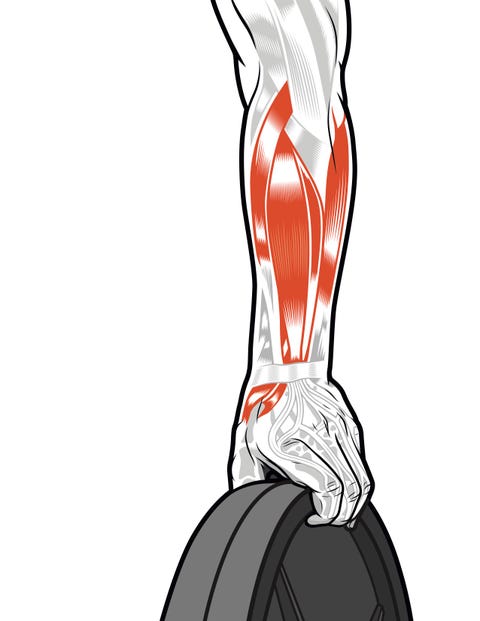
T.M. Detwiler
Forearm Flexors
The muscles on the pinky side of your lower arm help grab and grip: key actions in nearly all sports.
Thenar Muscles
These help your thumb pinch toward your fingers, and they don’t get much love in most gym workouts.
Pinch Perfect
The smooth-sides-out plate pinch is a gold standard of grip strength, but it’s not the only way.
True Grips for Strength
Deadlift
Use a mixed grip to handle heavy loads.
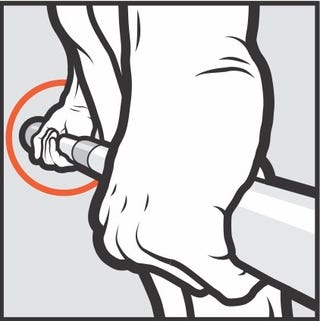
T.M. Detwiler
On lighter sets, use a conventional double-overhand grip. But on your heaviest sets, use a mixed grip—one palm facing you and the other facing away. This keeps the barbell more secure throughout the move. Each set, switch it up (so the hand facing you now faces away) to avoid repeatedly twisting your back in one direction.
Bench Press
Wrap your thumb; skip the monkey grip.
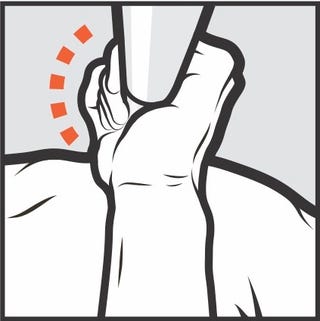
T.M. Detwiler
While the monkey grip (fingers and thumb on the same side of the bar) is sometimes advised for shoulder comfort, it makes you more liable to drop the bar. Always wrap your thumb around the bar and focus on the distance between your hands. Keep your forearms perpendicular to the floor when the bar touches your chest.
Olympic Lift
The hook grip may not be the best here.
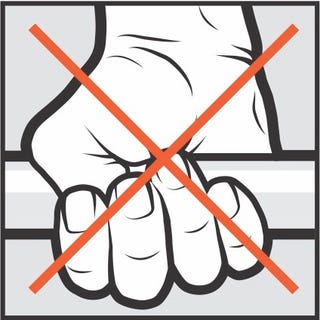
T.M. Detwiler
Stick to a standard double-overhand grip, with your thumb outside your fingers, wrapping your fingers tightly. Elite powerlifters may tell you to use the hook grip (wrapping your fingers around both your thumb and the bar) on snatches and power cleans. If you’re not a powerlifting beast, you might want to reconsider.
Power Clean
Put your hands just outside your hips.

T.M. Detwiler
This one is all about hand placement. To determine your optimum hand position, hold the bar in front of your thighs, extend your thumbs so they point toward each other, and shift your hands so your thumbs just touch the sides of your legs. This will enable your knuckles to rest outside your shoulders when the bar is at your chest.
Front Squat
Can’t grab the bar? Use your wraps.
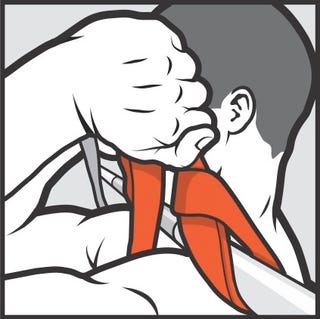
T.M. Detwiler
You want the bar across the front of your shoulders, using an overhand grip. If that causes shoulder, elbow, or wrist pain, just tie wrist straps or ropes to the bar, grab the ends, and then lift your elbows high beneath the bar. This will allow you to grip the bar even if you have mobility limitations.
Running
Keep your hands loose and relaxed.
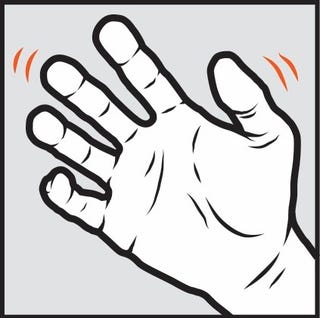
T.M. Detwiler
You may not bethinking about your grip when you go for a run, but you should be, says ultramarathoner Adam Chase, author of The Ultimate Guide to Trail Running. Avoid clenching your fists when you run, and focus on keeping your hands relaxed and loose, minimizing forearm strain and conserving energy.
Get a Firmer Grasp
Kettlebell Crush
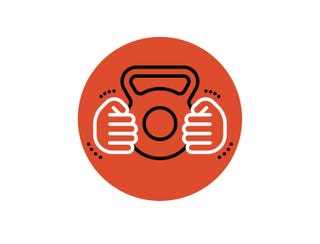
SODAVEKT
- Squeeze a kettlebell by its sides as if you’re trying to deflate a basketball. Hinge forward and do rows. Do 3 sets of 10 to 12 reps.
Towel Grip

SODAVEKT
- Drape a towel over a bar. Do chinups or pullups, one hand grasping the towel, the other the bar. Switch hands each set. Do 4 sets of 4 to 6.
Bottoms Up
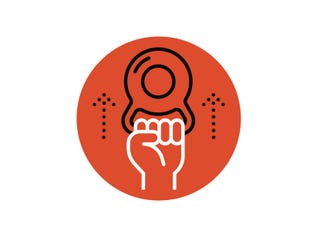
Source: Read Full Article
